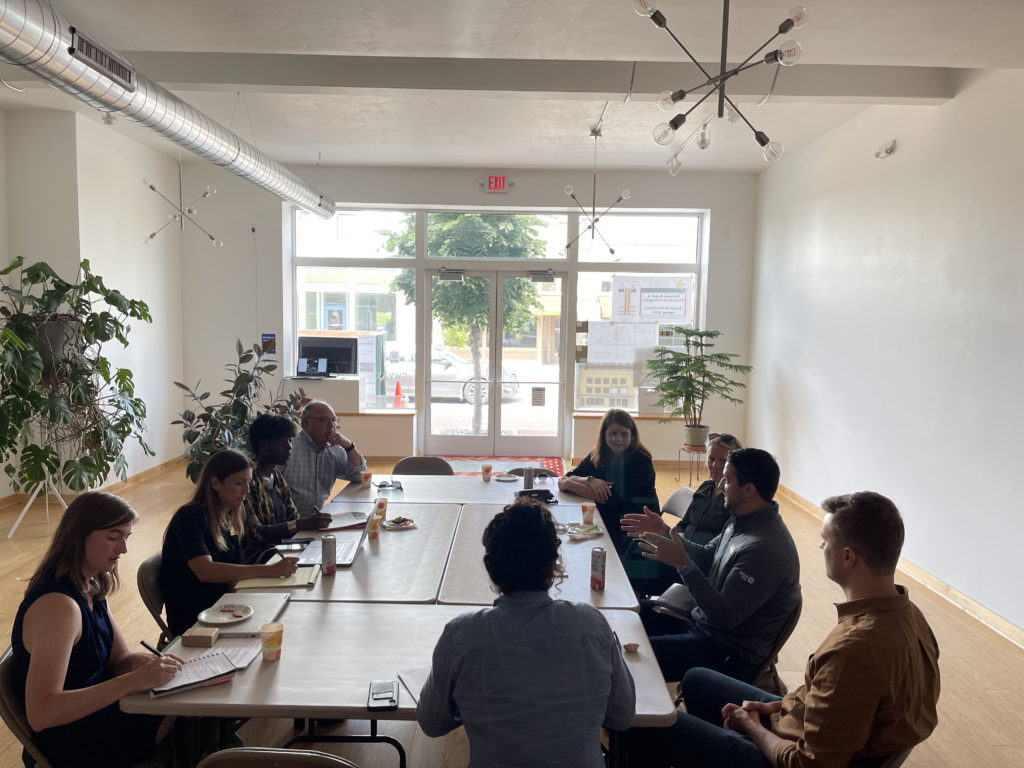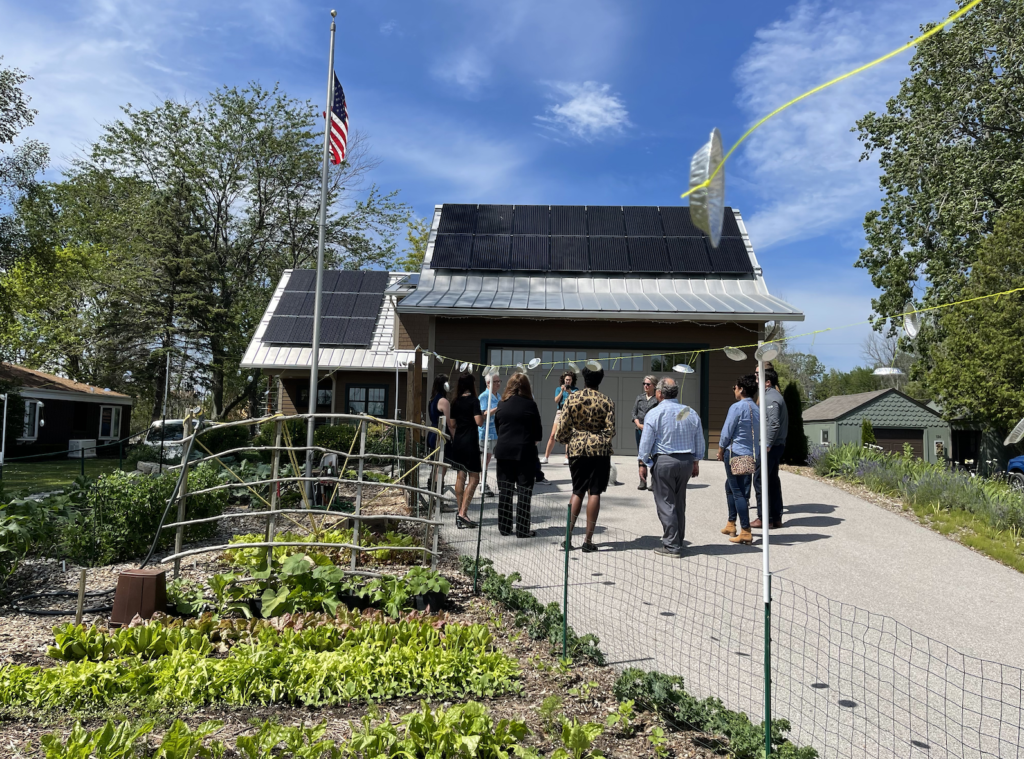Building for a Changing Climate
- Share
- Tweet
- Pin
- Share

State officials tour Door County for ways to build for sustainability and resiliency
One of the earliest forms of building code came almost 4,000 years ago from a Babylonian king, Hammurabi. He wrote that the builder of a home that failed, collapsed and killed an inhabitant should pay with his or her life.
Wisconsin’s building code is not quite so strict, though it is written to provide minimum standards to safeguard life and limb. Neither is it so old, having been adopted in 1978. Still, today’s building practices governing design, construction, materials and use are not those of 40 years ago.
The code is “outdated,” said Commissioner Dawn Crim, secretary of the Wisconsin Department of Safety and Professional Services, which oversees the Wisconsin Uniform Building Code that governs all building projects across the state.
Lacking in the code are sustainable, resilient design elements and building practices that would permit innovations and future materials and uses for a changing climate and world. And if those things are not in the code, the process is neither smooth nor easy for those who want to construct a home that walks lightly upon the earth.
“If it’s not in the code, they have to get a variance from the local municipality,” she said. “So what we’re looking at is what is possible.”
To learn what’s possible for future state building code changes, Crim initiated a trip to Door County and invited Kathy Blumenfeld, Secretary of the Department of Financial Institutions; and Mark Afable, commissioner of insurance and chair of the National Task Force for Building Resiliency and Sustainability.

The daylong tour on June 28 included six homes, five of those designed by architect Virge Temme, and one by architect Meghan Hawkins. Both women build sustainable, resilient homes using passive-house principles of design that achieve high energy efficiency through net-zero or net-zero-ready standards that use less energy and fewer resources and are healthier for the occupants.
The homes are located from Sturgeon Bay to Sister Bay and include features such as double-wall framing and insulation, airtight construction, metal roofing, moisture mitigation, spatial economy practices, double- and triple-paned windows, and all-electric, passive solar design details.

The three commissioners viewed those high-performance features from perspectives that were slightly different, yet intricately connected.
“If a home appraiser comes in to determine how much the house is worth, if they don’t understand the new sustainable building materials and the cost on the front end, they will underappraise the house,” Crim said.
The appraisal piece is in Blumenfeld’s wheelhouse. Also in her area is the lender’s need to understand the value of sustainable building materials, which can cost more than typical materials.
“You do recoup your cost, but you’re investing in your home on the front end, so you may need to borrow more money than your traditional home,” Crim said.
Architects such as Temme and Hawkins do better than the state’s existing building codes, using principles that have emerged with the concepts of sustainability and resilience. Sustainability refers to the use of low-impact, high-performance materials, and resilience to a home’s ability to withstand natural disasters.
Both are important concepts in the insurance industry, according to Kris Canto, a senior analyst for American Family Insurance in the enterprise risk management area. Canto served on the Governor’s Task Force on Climate Change and joined the June 28 tour to learn how the insurance industry can partner with the government on needed changes. Canto’s work focuses on future climate scenarios to anticipate climate risk and resilience. In practice, that means looking at mitigation, or how homeowners can reduce their carbon footprints through energy enhancements and climate-risk adaptation.
“Adaptation is thinking the climate is going to change anyway, so how do we change the way we build our homes to be more resilient to whatever the new future is going to look like?” he said.
Afable said the state could do more to ensure that homes are built better to better protect homeowners. He saw fireproofing, insulation and water-mitigation features during the tour that could help.
“We think that climate change is real and that there’s more that we can do to mitigate the damage that’s done from the weather events we’re seeing, and we believe there will continue to be weather events to be dealt with,” he said. “We’re seeing more and more severe-weather events: hail, windstorms, wildfires now. And so all these things are important, and the more sustainable, the more resilient homes are, the less cost to consumers through less insurance costs.”

Blumenfeld said the tour connected the dots for her between the roles lenders and appraisers play when creating mortgages for sustainably built homes and ascertaining the values of those homes. What also struck her was how green building creates healthier homes by using building materials that are free of dangerous off-gases, particulates and water contaminants that can make people sick.
“My eyes have been opened in so many ways,” she said.
The group ended the tour with a roundtable discussion at 231 N. 3rd Ave. in Sturgeon Bay. The all-electric, super-insulated building powered in large part by a 20+ kW solar array on the roof once housed the Door County Advocate. The building has been converted to three apartments, a public meeting space and overflow space for the adjacent Third Avenue PlayWorks.
Crim said she would take the information she learned during the tour back to Madison. Afable said they would need to bring architects and builders together to learn the barriers that prevent them from including sustainable, resilient design features into the homes they construct.
“I’d like us to get the builders in a dialogue,” Afable said.
